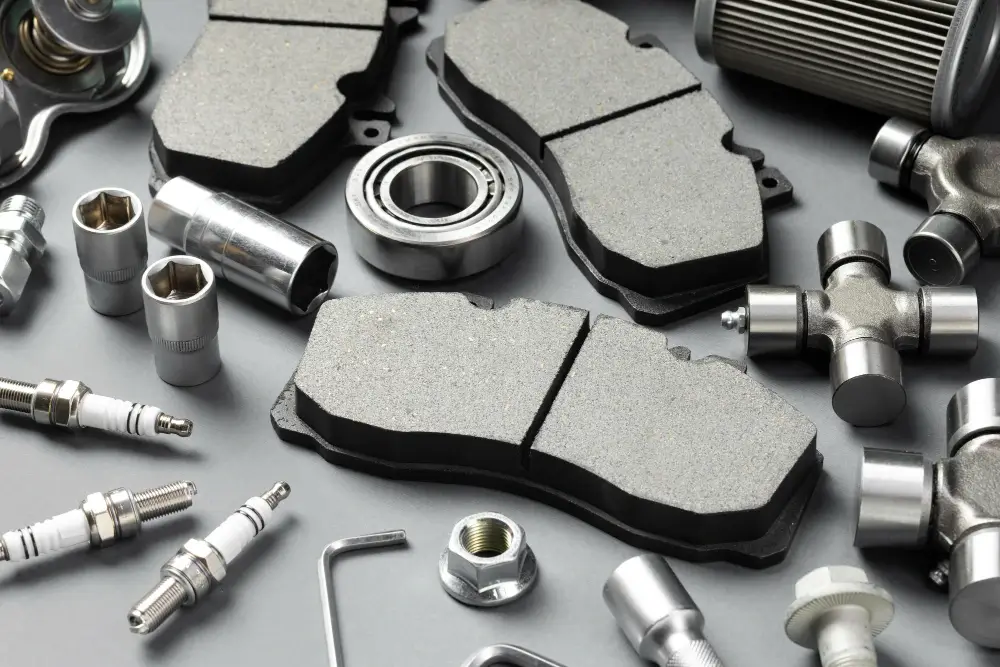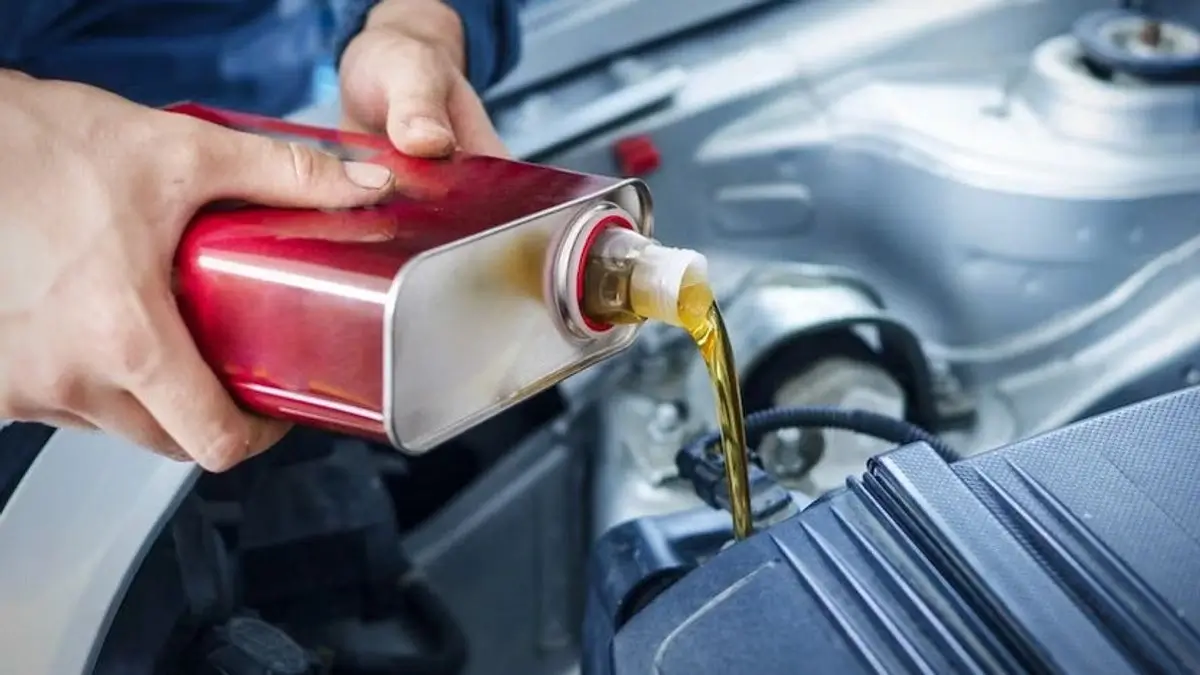In recent years, SUV (Sport Utility Vehicle) cars have increasingly dominated the automotive market in Indonesia. With their bold design, spacious cabins, and ability to handle various terrains, these vehicles have become popular across many groups. Not only are they visually impressive, but SUVs are also known for being comfortable on long trips and durable on rough roads.
Discussing their popularity, GAIKINDO (Association of Indonesian Automotive Industries) recorded that the medium SUV segment attracted the highest interest throughout 2024, with the Chery Tiggo 8 Pro leading the market in total sales, surpassing its competitors. Entering the first quarter of 2025, Chery recorded wholesale sales of 4,399 units. Among those, the Chery J6 SUV contributed 987 units as of March. This proves that Indonesian consumers are increasingly choosing SUVs as their primary daily vehicle, whether for city mobility or family holidays.
With various SUV types on the market, how can you determine which model suits your needs? This article will help you better understand SUVs, from their basic concepts and available types to their advantages and Chery’s best SUV recommendations that suit your lifestyle.
What is an SUV?
An SUV (Sport Utility Vehicle) is a type of car designed to combine road-driving comfort with the ability to tackle tough terrains. These vehicles typically have a taller stance than sedans, a sturdy body, and a spacious cabin—making them ideal for carrying passengers and luggage.
SUVs usually come with rear-wheel drive (RWD), front-wheel drive (FWD), or even all-wheel drive (AWD) / four-wheel drive (4WD) systems, enabling them to handle diverse road conditions, from smooth asphalt to rocky or muddy tracks. Their high ground clearance is also a key advantage, minimizing the risk of scraping the underside of the vehicle.
Compared to other car types like sedans or hatchbacks, SUVs stand out for their flexibility. Sedans tend to be lower and better suited for urban use, while hatchbacks are compact but limited in cabin and trunk capacity. On the other hand, SUVs offer a higher seating position, better visibility, and generally more advanced safety features.
Although initially known as off-road vehicles, SUVs have evolved into stylish, comfortable, and high-tech family cars. Many manufacturers now offer crossover SUVs that blend SUV styling with passenger car platforms for a smoother and more efficient driving experience.
Types of SUVs
The differences between SUV types are typically based on body size, passenger capacity, features, and off-road capabilities. Here are some common SUV categories in Indonesia:
1. Compact SUV
Compact SUVs are ideal for urban users looking for slimmer-sized SUVs to navigate narrow streets. These vehicles offer a mix of fuel efficiency, comfort, and maneuverability. Examples include the Chery Tiggo 7 Pro, Chery Omoda 5, and its upgraded version, Omoda 5 GT.
2. Mid-Size SUV
Mid-size SUVs are among the most popular segments, comfortably seating up to seven passengers and delivering solid performance for long trips or casual drives. In this segment, Chery offers the Tiggo 8 Pro, featuring luxurious soundproof interiors, a panoramic sunroof, a high-performance 2.0L TGDI engine, spacious cabins, and modern exterior design.
3. Full-Size SUV
If mid-size isn’t enough, full-size SUVs offer maximum space, engine power, and comfort. These models are popular among large families or users needing significant cargo capacity. One standout from Chery is the Chery Tiggo 8 CSH, a 7-seater SUV powered by Chery Super Hybrid technology. It features a 1.5L turbo gasoline engine and a hybrid system that enables up to 90 km in full electric mode.
4. Luxury SUV
Luxury SUVs focus on premium design, comfort, and high-tech features. Vehicles in this class typically feature elegant looks and cabins with premium materials. The Chery Tiggo 8 Pro Max represents Chery’s luxury SUV with a modern exterior, roomy interior, and advanced features such as complete safety systems and both FWD and AWD options. Powered by a strong engine and a 230 mm ground clearance, this variant excels in both appearance and capability.
5. Off-Road SUV
Designed for adventure seekers, off-road SUVs are built to handle rocky, muddy, or sandy terrain. Chery introduces the J6, part of the Omoda series—a boxy-styled electric vehicle with a futuristic touch, capable of tackling extreme roads. Equipped with an AWD system and available in iWD (Intelligent Wheel Drive) or RWD variants, the J6 offers up to 426 km of range, making it perfect for eco-conscious off-road enthusiasts.
6. Crossover SUV (CUV)
Crossover SUVs combine passenger car comfort with SUV styling and durability. Ideal for city driving with added flexibility, Chery offers two models in this segment:
Chery Omoda E5 is a 5-seater electric SUV featuring a futuristic design and advanced features like a 24.6-inch display, ADAS system, and fast charging. With a 61 kWh battery, it can travel up to 430 km on a single charge.
Chery Tiggo Cross is a crossover SUV with a modern design, spacious cabin for five, and a high yet comfortable driving position. It combines the best of SUVs and crossovers for daily commutes or inter-city travel.
Advantages of SUVs
SUVs offer several practical benefits, making them a favorite among Indonesian consumers. From comfort to performance, here are some key reasons why SUVs are in demand:
1. Comfort and Safety
Modern SUVs are designed for maximum driving comfort. With softer suspension, higher seating positions, and good cabin insulation, rides feel smoother. Additionally, SUVs often come equipped with advanced safety features such as dual airbags, ABS brakes, stability control, and ADAS (Advanced Driver Assistance System) for optimal protection.
2. Performance and Durability
SUVs are known for their powerful engines and rugged build, capable of performing well on highways and rough terrains. Their wide range is supported by high ground clearance and AWD or 4WD systems in select models. This makes them ideal for long-distance travel or areas with challenging road conditions.
3. Spacious Cabin
Thanks to their larger body dimensions, SUVs offer generous cabin space. They can typically accommodate 5 to 7 passengers with flexible luggage space. Rear seat folding features also allow for transporting larger items without compromising comfort.
4. Technology and Design
Today’s SUVs are not just tough but also stylish. Aerodynamic and modern exterior designs are common, while interiors come equipped with the latest technologies like panoramic sunroofs, touchscreen infotainment systems, smartphone connectivity, and wireless charging. These elements make driving more enjoyable and upscale.
5. Higher Resale Value
SUVs generally maintain a more stable resale value compared to other car types, especially when well-maintained and from trusted brands. This makes them a valuable consideration for long-term investments.
Best SUV Recommendations for 2025
Seeing the high enthusiasm of Indonesian consumers for SUV-type vehicles, Chery has launched a diverse lineup under two main series: Tiggo and Omoda. The Tiggo series was first introduced in Indonesia in 2007 and has continued to evolve to meet market needs. Meanwhile, Omoda is a newer series that made its debut in 2023. Currently, Tiggo has a total of 6 SUV models, while Omoda has 4. Here is a review of each model:
1. Chery Tiggo 8 CSH – Full-Size Hybrid SUV with Luxury Features
For those of you who need a 7-seater SUV with excellent performance (204 PS and 310 Nm torque) and fuel efficiency, the Chery Tiggo 8 CSH is an ideal choice.
Powered by Chery Super Hybrid technology, this vehicle is equipped with a 1.5L ACTECO turbocharged gasoline engine combined with a hybrid system, enabling users to drive up to 90 km in full electric mode. The Tiggo 8 CSH is suitable for large families that frequently take long trips while remaining energy efficient.
This new model was first introduced during the Indonesia International Motor Show (IIMS) 2025, and currently, it’s offered at a special price of IDR 499,000,000 for the first 1,000 buyers.
Key Specifications:
540° HD Panoramic Camera
50W wireless fast charging
12 speakers (including front headrest speakers)
10 airbags
Available in 4 colors: Green Aurora, Black Carbon Crystal, Grey Bamboo Ash, White Khaki
90 km EV range (IP68 waterproof battery protection)
Over 1,300 km hybrid range
Equipped with 14 ADAS features
2. Chery Tiggo 8 – Premium Yet Economical Mid-Size SUV
Moving to the Mid-Size SUV segment, the Chery Tiggo 8 offers a 7-seater layout and is the most affordable option among the Tiggo 8 variants. Even as the entry-level model, it still performs well with a 1.6 TGDI engine producing 186 HP and 290 Nm of torque.
Key features include a panoramic sunroof, large head unit, and second-row seats that can slide for extra comfort—ideal for young families transitioning into the premium SUV category.
Available in 4 neutral colors: White Howlite, Black Platinum, Blue Sapphire, Grey Morganite
Variants & Prices:
Chery Tiggo 8 Comfort – Starting from IDR 357,500,000 (360° panoramic camera, 6 airbags, Dual Zone N96 Filter + second-row, driving assist features)
Chery Tiggo 8 Premium – Starting from IDR 397,500,000 (Panoramic sunroof, 6 airbags, Dual Zone N96 Filter for second and third rows, 9 ADAS features)
3. Chery Tiggo 8 Pro – Sporty Mid-Size SUV
Still in the mid-size category, the Chery Tiggo 8 Pro is an upgraded version of the previous variant. It adds luxury features such as leather interior materials, ambient lighting, and a more advanced entertainment system. In terms of performance, this variant is powered by a 2.0L TGDI engine with 250 HP and 390 Nm torque. It also includes a more refined suspension and better driving comfort.
Safety systems are also enhanced with ADAS features such as Autonomous Emergency Braking (AEB) and Lane Departure Warning (LDW). The Tiggo 8 Pro is available in two additional colors: Violet Amethyst and Silver Granite.
Variants & Prices:
Tiggo 8 Pro Luxury – Starting from IDR 528,500,000 (Cooling box in armrest, Dual Zone AC, wireless charging)
Tiggo 8 Pro Premium – Starting from IDR 558,500,000 (ADAS, driver seat memory, panoramic sunroof)
4. Chery Tiggo 8 Pro Max – High-Class Luxury SUV
At the top of the Tiggo 8 series, the Tiggo 8 Pro Max stands as a luxury SUV with a 2.0L TGDI engine (250 HP and 390 Nm torque), offering both FWD and AWD drive options and higher ground clearance (230 mm), making it versatile for various road conditions.
Although the exterior design closely resembles the 8 Pro, the Pro Max comes with more advanced features like a 24.6-inch dual curved screen, 540° panoramic camera, 50W wireless charging, and premium SONY sound system, making it the perfect SUV for those who prioritize luxury and advanced features.
Available in two colors: White Howlite and Black Platinum
Variants & Prices:
Tiggo 8 Pro Max FWD – Starting from IDR 568,500,000 (Multi-color ambient light, 9 airbags, 12 ADAS features)
Tiggo 8 Pro Max AWD – Starting from IDR 628,500,000 (Skylight ambient light, 10 airbags, 12 ADAS features)
5. Chery Tiggo 7 Pro, Feature-Rich Compact SUV with a Premium Look
Before the Tiggo 8 Series, Chery had already introduced the Tiggo 7 Pro, a compact 5-seater SUV. Powered by a 1.5 TCI turbo engine that delivers up to 155 HP and 230 Nm of torque, this model comes fully equipped with ADAS safety features, 6 SRS airbags, a panoramic sunroof, Smart Voice Assistant, and a Dynamic Tech Interior for a comfortable driving experience. The Tiggo 7 Pro also boasts the most color options among the Tiggo series. Here are the specifications:
Chery Tiggo 7 Pro Variants:
- Chery Tiggo 7 Pro Comfort from IDR 369,500,000 (1.5 Turbo Engine, Dual Zone AC, Hill Start Assistant).
- Chery Tiggo 7 Pro Luxury from IDR 399,500,000 (Intelligent Voice Assistant, Wireless Charging, Blind Spot Detection).
- Chery Tiggo 7 Pro Premium from IDR 430,500,000 (360° HD Camera, Adaptive Cruise Control, Panoramic Sunroof).
6. Chery Omoda 5 and 5 GT, Compact SUV Ideal for City Driving
For those seeking a stylish urban vehicle, the Chery Omoda 5 and its upgraded version Omoda 5 GT offer compact designs with a length of 4400mm and a 2630mm wheelbase. Its futuristic and sporty style has attracted many young drivers. The main differences between the two lie in engine specs and performance features.
The standard Chery Omoda 5 is powered by a 1.5L TVI engine that delivers around 145 HP and 230 Nm of torque. Efficient and smooth, it's great for daily driving. Available in four neutral colors: White Howlite, Blue Turquoise, Grey Morganite, and Black Platinum.
Chery Omoda 5 Variants:
- Chery Omoda 5 Z from IDR 346,800,000 (Wireless Charging, ADAS, Hill Start Assist).
- Chery Omoda 5 RZ from IDR 414,000,000 (360° HD Camera, Power Sunroof, Door Mirror Heating).
Meanwhile, the Omoda 5 GT is the high-performance version with a 1.6L TGDI engine producing up to 197 HP and 290 Nm of torque. It features tuned suspension and transmission, enhanced safety systems, and a more aggressive exterior look. Available in White Howlite Black.
Chery Omoda 5 GT Variants:
- Chery Omoda 5 GT FWD from IDR 453,800,000 (Various Driving Modes, Premium SONY Audio System, Multi-Color Ambient Lighting).
- Chery Omoda 5 GT AWD from IDR 499,000,000 (Extreme Driving Mode, Driver Monitoring Camera, Smart Wireless Charging).
7. Chery J6, The Most Flexible Off-Road Electric SUV
If you love adventure and often travel across rough terrain, the Chery J6 is a compelling recommendation in the electric off-road SUV segment. Featuring a futuristic boxy design and AWD drivetrain, this vehicle is built to tackle rocky, muddy, and sandy roads. With a driving range of up to 426 km, the J6 is reliable for long trips without worrying about charging.
Performance-wise, the Chery J6 can accelerate from 0–100 km/h in just 6.5 seconds, reaching a top speed of 150 km/h. With a powerful 385 Nm of torque, it delivers excellent thrust in all conditions. Despite its 4,406 mm body length, it remains proportionate for all terrains while being comfortable for daily use. Available in both iWD and RWD variants, the J6 proves that electric SUVs can be tough, flexible, and powerful.
Chery J6 EV Variants:
- Chery J6 EV RWD from IDR 505,500,000 (Rear Wheel Drive, Ventilated Seats Row 1 & 2, 540° Camera, ADAS, Airbags, Panoramic Electric Sunroof, 5 Exclusive Colors).
- Chery J6 EV IWD from IDR 565,500,000 (Intelligent Wheel Drive, 8+X Driving Modes, Massaging Seats for Driver & Passenger, 12 Infinity Speakers, ADAS, Airbags, 5 Exclusive Colors).
- Chery J6 EV RWD Phantom Edition from IDR 555,500,000 (Rear Wheel Drive, Ventilated Seats Row 1 & 2, 540° Camera, ADAS, Airbags, Panoramic Electric Sunroof, Phantom Elegance Color).
- Chery J6 EV IWD Phantom Edition from IDR 615,000,000 (Intelligent Wheel Drive, 8+X Driving Modes, Massaging Seats for Driver & Passenger, 12 Infinity Speakers, ADAS, Airbags, Phantom Elegance Color).
8. Chery Omoda E5, Futuristic Electric Crossover SUV for Urban Mobility
For urban drivers looking for a high-tech, modern electric crossover SUV, the Chery Omoda E5 is the perfect choice. This 5-seater electric SUV features a futuristic design and advanced technologies such as a wide 24.6-inch display, ADAS active safety system, and fast-charging support for daily convenience. Equipped with a 61 kWh battery, the Omoda E5 can travel up to 430 km on a single charge, ideal for efficient and comfortable city driving.
In terms of performance, it accelerates from 0–100 km/h in 7.2 seconds with a top speed of 175 km/h. Producing 201 HP and 340 Nm of torque, the Omoda E5 offers responsive maneuvering in urban traffic and smooth cruising on highways. Its blend of design, tech, and performance makes it a stylish yet functional urban electric SUV.
Chery Omoda E5 Variants:
- Chery Omoda E5 Pure from IDR 425,500,000 (Rear Camera, 61 kWh Battery, Range up to 505 km, 17 ADAS, 6 Ring Airbags, Available in 5 Colors).
- Chery Omoda E5 from IDR 505,500,000 (540° Camera, Electric Sunroof, Electric Tailgate, Includes All Features of Omoda E5 Pure, Available in 2 Colors).
9. Chery Tiggo Cross, Versatile Crossover SUV That’s Comfortable and Efficient
Finally, if you're looking for an agile crossover with SUV character, the Chery Tiggo Cross is an excellent option. This model combines SUV and crossover benefits: compact design, spacious cabin, and higher ground clearance than a sedan, making it reliable for bumpy roads or puddles. Perfect for daily commuting or weekend family trips.
Powered by a 1.5L CVT engine generating 116 PS and 138 Nm of torque, the Tiggo Cross delivers efficient performance with responsive mobility for urban needs. With multiple comfort and flexibility features, it ensures a practical yet enjoyable driving experience without sacrificing SUV style and utility. Available in four colors: Red Ruby, Silver Moonlight, Black Platinum, and White Howlite.
Chery Tiggo Cross Variants:
- Chery Tiggo Cross Comfort from IDR 249,500,000 (Super Wide 20.5-inch HD Display, Intelligent Voice Assistant, Wireless Android Auto & Apple CarPlay).
- Chery Tiggo Cross Premium from IDR 279,500,000 (15 ADAS, 4-Way Steering Adjustment, Sunroof).
What’s the Difference Between an SUV and an MPV?
SUVs are designed for performance on various terrains, featuring high ground clearance and a rugged appearance. MPVs (Multi-Purpose Vehicles), on the other hand, focus more on passenger comfort and maximum carrying capacity for families. In general, SUVs excel in terms of range and versatility, while MPVs are more efficient and practical for daily family use.
Looking at the automotive market trend in Indonesia through 2025, it's clear that SUVs have become a favorite. This is due to their blend of comfort, strong performance, modern design, and spacious interiors. These vehicles are ideal for daily use, long-distance travel, or tackling challenging roads.
So, which Chery SUV fits your lifestyle? Is it the fuel-efficient hybrid SUV like the Tiggo 8 CSH, the eco-friendly futuristic Omoda E5, or the feature-packed luxury Tiggo 8 Pro Max? Discover your match and experience safer, more comfortable, and stylish driving with Chery.







